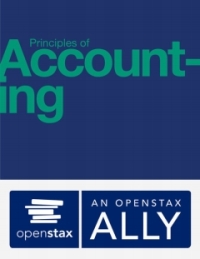Question
Part A) Assume that a parent company acquired 80% of the outstanding voting common stock of a subsidiary on January 1, 2012. On the acquisition
Part A) Assume that a parent company acquired 80% of the outstanding voting common stock of a subsidiary on January 1, 2012. On the acquisition date, the identifiable net assets of the subsidiary had fair values that approximated their recorded book values except for a patent, which had a fair value of $100,000 and no recorded book value. On the date of acquisition, the patent had 5 years of remaining useful life and the parent company amortizes its intangible assets using straight line amortization. During the year ended December 31, 2013, the subsidiary recorded sales to the parent in the amount of $100,000. On these sales, the subsidiary recorded pre-consolidation gross profits equal to 25%. Approximately 30% of this merchandise remains in the parents inventory at December 31, 2013. The following summarized pre-consolidation financial statements are for the parent and the subsidiary for the year ended December 31, 2013:
| Investor | Investee | |
|---|---|---|
| Income statement: | ||
| Revenues | $2,400,000 | $320,000 |
| Equity income | 106,000 | 0 |
| Expenses | (1,600,000) | (160,000) |
| Net income | $906,000 | $160,000 |
| Retained earnings statement: | ||
| BOY retained earnings | $752,000 | $40,000 |
| Net income | 906,000 | 160,000 |
| Dividends declared | (64,000) | (40,000) |
| EOY retained earnings | $1,594,000 | $160,000 |
| Balance sheet: | ||
| Current assets | $800,000 | $100,000 |
| Equity investment | 234,000 | - |
| Noncurrent assets | 4,000,000 | 300,000 |
| Total assets | $5,034,000 | $400,000 |
| Liabilities | $2,640,000 | $160,000 |
| Common stock & APIC | 800,000 | 80,000 |
| Retained earnings | 1,594,000 | 160,000 |
| Total liabilities & stockholders equity | $5,034,000 | $400,000 |
Based on this information, determine the balance for Consolidated Expenses:
A) $1,600,000
B) $1,687,500
C) $1,760,000
D) $1,787,500
Part b)
Assume that on January 1, 2009, a parent company acquired a 90% interest in a subsidiary's voting common stock. On the date of acquisition, the fair value of the subsidiary's net assets equaled their reported book values. On January 1, 2011, the subsidiary purchased a building for $486,000. The building has a useful life of 10 years and is depreciated on a straight-line basis with no salvage value. On January 1, 2013, the subsidiary sold the building to the parent for $420,000. The parent estimated that the building had an 8 year remaining useful life and no salvage value. The parent also uses the straight-line method of amortization. The parent's "stand-alone" income (i.e., net income before recording any adjustments related to pre-consolidation investment accounting) is $500,000. The subsidiary's recorded net income is $115,000.
Intercompany sale of depreciable assets Consolidated net income attributable to the controlling interest:
A) $603,500 B) $607,400 C) $576,200 D) $578,930
Step by Step Solution
There are 3 Steps involved in it
Step: 1

Get Instant Access to Expert-Tailored Solutions
See step-by-step solutions with expert insights and AI powered tools for academic success
Step: 2

Step: 3

Ace Your Homework with AI
Get the answers you need in no time with our AI-driven, step-by-step assistance
Get Started


